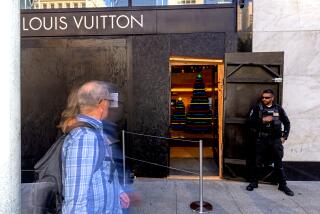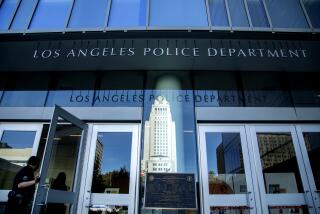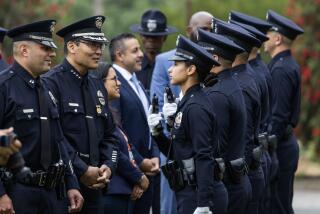Crime and economy don’t tell whole story
- Share via
Last week, the Los Angeles Police Department reported that in 2008, for the sixth consecutive year, crime fell in the city. At a time when the economy was reeling and unemployment was rising, serious crime dropped about 2.5% over the previous year.
I wish we fully understood why.
During the last two decades, scholars have made great progress in explaining why some individuals are more likely than others to commit crimes, but very little in explaining why the crime rate in a city or nation rises or falls.
Everyone knows that there is more crime in economically depressed inner-city neighborhoods than in affluent suburbs. That fact leads naturally to the assumption that if a community becomes more prosperous, crime rates will go down, and if income levels decline, crime rates go up.
Economists who have checked this view have discovered that it is often true, but not always. They have found, for example, that the burglary rate goes up by 2 percentage points for every 1-percentage-point increase in the unemployment rate. That sounds like a big change until you realize that if the unemployment rate rises from 6% to 8% (which is about what it is in California now), the burglary rate will increase by 4%. Because burglaries aren’t measured all that accurately (some are never reported, and police vary in how they report the statistics), it’s not certain that we would even notice so small an increase.
A lot of other factors affect the crime rate as well. It often goes up when the population gets younger, and when drug abuse becomes more common. Murder rates are profoundly influenced, at least in big cities, by gang activity. We don’t have good ways of understanding why gang activity changes, though we suspect that changes in behavior are influenced by what the police do, whether gang truces have worked and whether gangs are fighting over drug and other illegal transactions.
All these imponderables make it difficult to fully understand why crime rates rise and fall. In the 1960s, the national homicide rate rose by 43%, even though the country was in a period of great prosperity and low unemployment. The homicide rate fell in the 1980s, even as the economy was wobbling, with high interest rates and a steep rise in business bankruptcies. In the 1990s, the murder rate fell by 39% at a time when unemployment also was declining.
So can the economy help explain fluctuations in crime? Sometimes yes, sometimes no. It would be difficult to link rising crime during the prosperous 1960s to economics. On the other hand, a declining economy provides a plausible theory to explain increases in crime during the 1990s. Matters become even more complicated if one goes back to the Depression of the 1930s. We had no FBI data on crime rates at that time, but several studies of individual cities suggest that crime rates fell even though one-quarter of all Americans were unemployed. Why? One reasonable hypothesis is that the Depression pulled families together, and this cohesion inhibited crime.
If you are not yet fully confused by the historical puzzles in the crime-economy link, add this one to your list. It is possible that rising crime rates are a cause rather than an outgrowth of unemployment. Some young men choose to drop out of school or the workforce to sell drugs, rob stores or mug people. They abandon legitimate jobs (and so drive up the unemployment rate) to take on illegal jobs (and so drive up the crime rate).
The role of the police in reducing crime is often overlooked by those preoccupied with the jobs-crime link. The sharp decline in crime in New York -- and now in Los Angeles -- has a lot to do with how those police departments changed.
Over the last several decades, New York has experienced the country’s largest decline in crime since we began keeping records. The reasons are not fully understood but include a 33% increase in the size of the New York Police Department, an excellent computerized system for tracking crime (Compstat), a management style that made precinct commanders fully accountable for managing crime in their districts and an aggressive policy of searching people on the streets for guns.
Chief William J. Bratton has brought some of those tactics to Los Angeles without, alas, a one-third increase in the number of officers. What he has accomplished without a big increase in the size of his force has been remarkable.
To try to sort out the combined and complex relations between crime and the economy, the age of the population, imprisonment, police work, neighborhood culture and gang activity, the National Academy of Sciences Committee on Law and Justice (which I chair) has begun an effort to explain something that no one has yet explained: Why do crime rates change?
If you have any good ideas, let me know.
James Q. Wilson teaches at Pepperdine University and is the author of “Thinking About Crime,” the coauthor of “Crime and Human Nature” and the co-editor of “Crime: Public Policies for Crime Control.”
More to Read
A cure for the common opinion
Get thought-provoking perspectives with our weekly newsletter.
You may occasionally receive promotional content from the Los Angeles Times.






